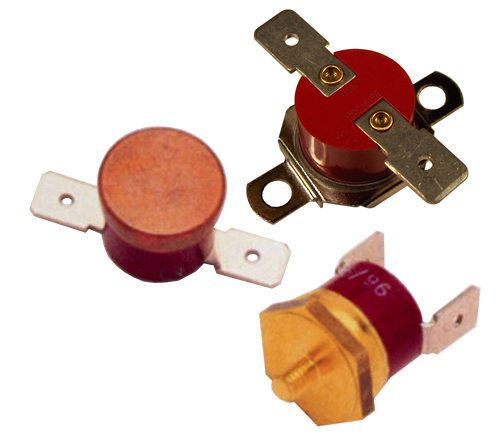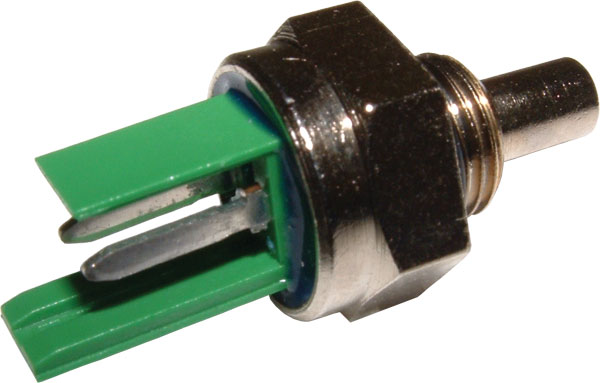Component Close Up: Thermistors
For specific manufacturers readings please also see;
Manufacturers A-B, Manufacturers C-P, Manufacturers R-W
What is a Thermistor?
They are used across a variey of industries, but play a vital role in delivering heat and hot water in your modern gas boiler, but what excatly is a thermistor?
Thermistor is formed from the words "thermal" and "resistor", and it is an electrical component whose internal resistance changes with temperature variation. They are normally made from the oxides of metals, such as cobalt, nickel, copper and magnesium. The metals are oxidised through a chemical reaction, ground to a fine powder, compressed, and then subjected to a very high temperature. They are then encased into an electrical component, with one end exposed to the heat source, and the other with an electrical connection.
Different Types of Thermistor
Thermistors come in two varieties, Negative Temperature Coefficient (NTC), and Positive Temperature Coefficient (PTC)
NTC Thermistors
These work by decreasing the resistance proportionally with an increase in temperature, for example 25 degress C to start at 12,000 Ohms, to 55 degrees C at 4,000 Ohms. As temperature goes up, resistance comes down.
Typical NTC Thermistors |
|---|
Typical starting resistances are in the range of 12-15,000 Ohms (12-15k Ohms), down as low as 900 Ohms when boiling.
PTC Thermistors
This is the opposite of an NTC, as the temperature increases proportionally with temperature rise. They are identical to look at as an NTC, they just behave differently.
PTC Thermistor,
|
|---|
From a 10 degree start at 800 Ohms, up to 90 degrees at 1600 Ohms. These are less common than NTC thermistors.
Where they are fitted?
They can be located in several places, but they are generally located on the flow and return pipes either in the lower part of the boiler, inside the combustion chamber, or attached on the heat exchanger outlet pipes. Some are 'wet' thermistors, whereby they are in contact with the water, some are 'dry' where they are attached onto a pipe and sense the heat transmitted onto the pipe. Some boilers have a flow and return thermistor, some also have one on the domestic hot water outlet pipe. Some modern condensers also have a thermistor checking for flue gas temperatures.
Controlling the Temperature
Thermistors work in conjunction with the user potetiometer (the boiler control knobs for temperature), and the Printed Circuit Board (PCB). A small Direct Current is sent to the thermistor via the potentiometer, and the PCB knows then whether to give more, or less gas to get the water to the correct temperature, depending on the small voltage drop due to the change in current.
Other functions of the Thermistor
Some thermistors readings are also used to tell the boiler whether to come on when the temperature gets too cold. This is known as inbuilt frost protection, and the boiler will ignite when the resistance reading drops below a certain reference point. Some thermistors are also used to monitor an anti scale function, called a pump over-run facility, whereby the pump continues to operate until the temperature has decreased to a set temperature.
Testing thermistors
A thermistor gives a certain resistance reading at a certain temperature. Therefore we can test across the components two connections with a multimeter set to read Ohms, and compare the reading we obtain against manufacturers charts at the current temperature. As the appliance heats up, we can also do another test to see if the resistance is going up or down accordingly.
Typical Thermistor Readings Chart |
|---|
For manufacturers expected readings please click one of the following;
Manufacturers A-B, Manufacturers C-P, Manufacturers R-W
It is important not to forget to check the leads when testing, as a broken or faulty lead connecting onto a thermistor can give problems. You can either test the leads for continuity both ends, or more preferable, test the leads and thermistor for resistance as one combined test. i.e. instead of disconnecting the leads at the thermistor, measure the resistance across the plug where they join onto the PCB.
One wire Thermistors
Some manufacturers may use a one wire thermistor, such as Vaillant. This is just a standard NTC thermistor, but the earth of the boiler is the second wire. So to test, just measure resistance between earth and the thermistor.
Be Safe
As with all electrical testing, please make sure you have isolated the power before dead testing components, testing resistances through a thermistor does not require any power, so Be Safe!
Kill the Power, not yourself.


